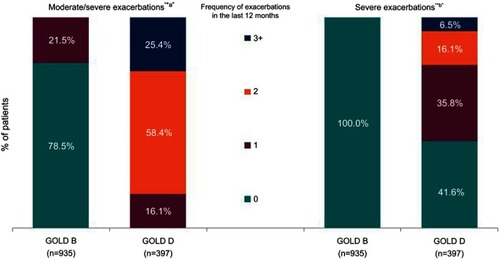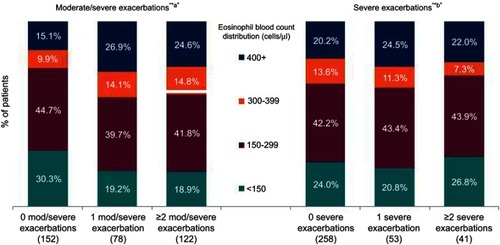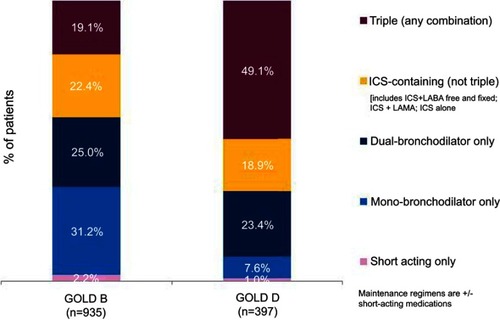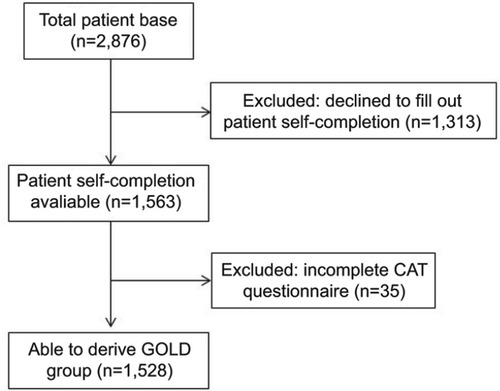Figures & data
Table 1 Baseline characteristics of all EU patients with derived GOLD classification (n=1,528)
Figure 2 The proportions of chronic obstructive pulmonary disease (COPD) patients with a history of 0, 1, 2, or ≥3 exacerbations in the previous 12 months in Global Initiative for COPD (GOLD) groups B and D. *aExacerbations which required treatment with oral corticosteroids, antibiotic, and/or hospital admission. *bExacerbations which required hospital admission. Population: All EU COPD-only patients with a derived GOLD group (calculated by using physician-reported recent history of exacerbations and patient-reported CAT score).

Figure 3 The proportions of chronic obstructive pulmonary disease patients with histories of 0, 1, or ≥2 of total and severe exacerbations by eosinophil blood count distribution. *aExacerbations which required treatment with OCS, antibiotic, and/or hospital admission. *bExacerbations which required hospital admission. Population: All EU COPD-only patients with a derived GOLD group (calculated by using physician-reported recent history of exacerbations and patient-reported CAT score) and a stated eosinophil blood count.

Figure 4 Current treatment patterns by Global Initiative for Chronic Obstructive Pulmonary Disease (GOLD) group. Population: All EU COPD-only patients with a derived GOLD group (calculated by using physician-reported recent history of exacerbations and patient-reported CAT score).



